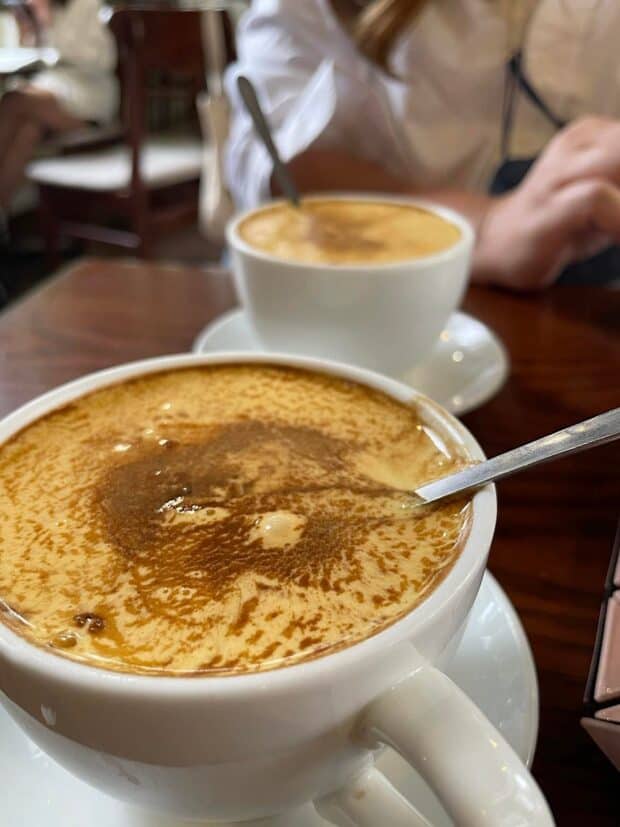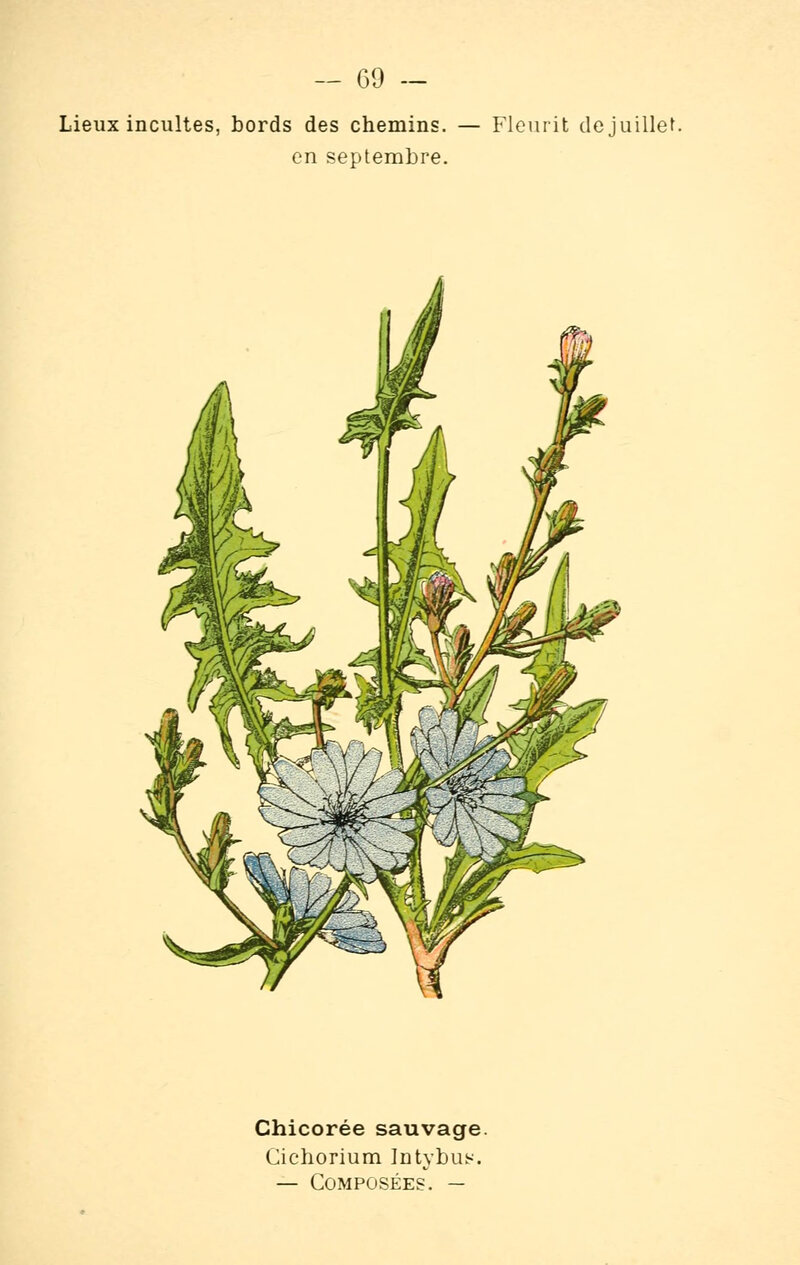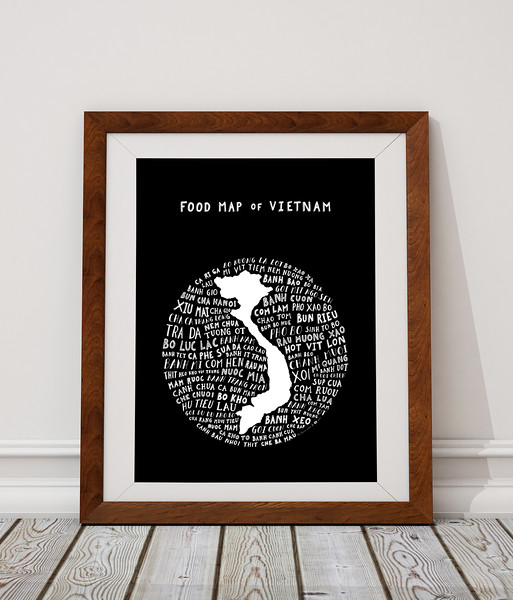
Recipe for Vietnamese Egg Coffee, Sampled in Hanoi
After so many years of wandering for food, visits back to Canada involve new recipes and my attempts at recreating dishes I loved and experienced abroad. While my family is usually thrilled to be my guinea pig, they were wary of the recipe I brought home in 2013: Vietnamese egg coffee (cà phê trứng), a drink that I first tasted in Hanoi.
For those staying at home these days, trying new things in the kitchen is a welcome respite from the onslaught of news. You may have heard of dalgona coffee, a whipped coffee first popularized in a South Korean movie, and named after a honeycomb treat of the same name. To my tastebuds, egg coffee is so much tastier.
Previously, I read of putting eggs in coffee before, mostly from Scandinavian countries where it was used to clarify the brew and generate an amber-coloured cup of coffee with a milder taste. Says Martin Lersch in his post about Norwegian egg coffee:
The addition of proteins while preparing the coffee serves two purposes: 1) it helps the coffee grounds to flocculate, allowing them to sink faster to the bottom of the pot (this effect is probably more pronounced when using eggs) and 2) the proteins bind irreversibly to astringent and bitter tasting polyphenols in coffee to form insoluble complexes that will precipitate. The end result is a clearer coffee with a pleasant and mild taste. The bitterness is only barely noticeable, but the coffee still has enough “body” so it doesn’t feel too thin!
It’s not only Norway, either. Sweden also serves this egg-filled treat. Per I Need Coffee’s Swedish Coffee recipe: “Swedish egg coffee is dead simple to make and the result is a non-bitter, surprisingly light and incredibly smooth cup that combines the wonderful flavor of your favorite roast with a reminiscent aftertaste of toasted cheese (trust me, it sounds strange but it works).”
In contrast, Vietnamese egg coffee (Cà Phê Trứng) is anything but a clearer coffee with a mild taste. As it appears in the photo above, it is essentially a Cadbury Creme Egg with a hint of mocha. So the Vietnamese coffee recipe below isn’t the healthiest, but it’s most definitely a satisfying snack on a cold day.
If you find yourself in Hanoi and want to try the egg coffee above, it is from Cafe Giang, 39 Nguyen Huu Huan street, in the Old Quarter. And it was fabulous.
Now making the coffee at Cafe Giang is Nguyen Van Dao, whose father invented the drink in the mid 1900s when he worked at Hanoi’s Sofitel Legend Metropole hotel. Per a recent piece in The Guardian about the coffee,
“at the time, milk was scarce in Vietnam so whisked egg yolk was used as a replacement. Other Hanoi cafes have attempted to imitate the drink, but the packed venue offering the authentic version is still the most popular spot in town for an egg coffee fix.
I can’t agree more about where to get it!
The recipe below was given to me by my host family, not Cafe Giang, and I’ve tried it many times. As noted below, I sometimes add almond extract for a bit of a different taste to the blend. Both are delicious. Egg coffee for all!
Easy Vietnamese Egg Coffee (Cà Phê Trứng) Recipe

Ingredients for Vietnamese Egg Coffee / Cà Phê Trứng
- 1 egg
- 3 teaspoons of Vietnamese coffee powder (Vietnamese coffee is available on Amazon here)
- 2 teaspoons of sweetened condensed milk
- Boiling water
Directions
- Brew a small cup of Vietnamese coffee. (Vietnamese coffee filters available on Amazon here. Also, for visual step-by-step of the brew process, there is a good set of photos explaining how to here.)
- Crack an egg and separate the yolk from the whites. Discard the whites.
- Put the yolk and the sweetened condensed milk in a small, deep bowl and whisk vigorously until you end up with a frothy, fluffy mixture like the one above.
- Add a tablespoon of the brewed coffee and whisk it in.
- In a clear coffee cup (we’re going for aesthetics here), pour in your brewed coffee, then add the fluffy egg mixture on top.
- Presto. Egg coffee.
Notes on Egg Coffee and Where to Get It

1. A reader, Graham, has tried this at home and says another option is to add the yolk to the coffee with the sweet milk and whisk all together. The foam will then rise to the top.
2. If you don’t want to make it with Vietnamese coffee, an alternative in the USA is Cafe du Monde’s coffee with chicory from New Orleans. In an interview with Vietnamese-American author and chef Andrea Nguyen, she notes:
Well, when Vietnamese people came to the U.S. in the mid-’70s, many of them settled in New Orleans. Their coffee back home was intense and bitter; the chicory in Café du Monde really matched that flavour, so the people who started working there got a taste of this coffee and started telling others in the community. It was a really small, tight-knit community, so word traveled to all over country.
Readers have reported in that it’s delicious with the chicory blend.

Per a 2021 piece from Gastro Obscura, we don’t know who historically had the bright idea of using chicory as a coffee substitute but we do know that coffee made with chicory first spread widely when Napoleon cut off British trade with much of Europe.
During that time, “Napoleon actively encouraged the drinking of chicory coffee, hoping that if France and its allies relied on local products, it would strangle the British economically.” Even when the trade routes opened up again, chicory stuck around — until even the mid-20th century.
These days, Café au Monde is known for its chicory brews but chicory root has made a comeback in other ways. People looking to cut out caffeine have sung its praises as “herbal coffee,” and it has a long history in traditional medicinal for a variety of uses for the relief of symptoms related to mild digestive disorders.
3. A 2015 piece about Cafe Giang in Vice Magazine’s Munchies column gives a bit of background to the cafe, and references that the coffee also contains…cheese. This is different to the recipe above, so I wanted to paste here. It’s the first I’ve heard of it, but I thought I’d include it regardless.
Every day, Café Giang hums with blenders, all churning up eggs, cheese, condensed milk, sugar, and other secret ingredients. It’s the birthplace of Hanoi’s cà phê trứng, or egg coffee. And yes, that means the egg and cheese go in the coffee.
Egg coffee has been a way of life and a livelihood for Tri Hoa Nguyen and his family since shortly after 1946, when Tri’s father Nguyen Giang founded Café Giang and invented the first cup of egg coffee. Because there was a shortage of fresh milk in Vietnam during the French War, most Vietnamese would line the bottom of the cup with condensed milk and pour the coffee on top, and that’s exactly how Vietnamese coffee is served today. But lacking milk, Nguyen whisked in egg as a substitute.
4. Egg coffee now found elsewhere in Vietnam, including HCMC/Saigon.
As the introduction notes, egg coffee began in the North of Vietnam, but due to its apparent tourist demand and Instagram-clout, you can now find it at many coffeeshops in the South and elsewhere. Ho Chi Minh City now offers heaps of “trứng” coffee options in the few short years since egg coffee’s deliciousness has exploded online. While it’s not the secret Café Giang recipe, it’ll tide you over in a pinch.
I’ve gotten some reader questions about whether this is a generally-consumed drink in Vietnamese households. During my years in Vietnam, it certainly was not. Vietnamese friends found the trend amusing, but delicious, and said that they did not drink it at home. The general cà phê sữa đá (Vietnamese iced coffee with sweetened condensed milk, literal translation is coffee milk ice) was far more normal in the home. Recipe for that, here.
Regardless, the trend seems here to stay, at least for the moment. As for where to find egg coffee in Saigon:
- Nấp Sài Gòn - 3/5 Nguyen Van Thu, District 1 (spacious location, wood tables, beautifully decorated cafe with a lot of different drink options on their extensive menu, including egg coffee).
- Loft 2 Café Café - 95 Pasteur, District 1 (more expensive cafe right in the heart of Q1)
5. Vietnamese egg coffee in North America and further afield?
- New Yorkers, you’re in luck: as of 2018 Hanoi House now sells egg coffee, a chance for you to try it in person without traveling oh-so-far. Sara Leveen, who co-founded Hanoi House alongside her partner Ben Lowell notes that, “like so many old recipes, it was created out of necessity.” They tried the coffee in Vietnam and it seems were as hooked as I was. Now it’s available for all “liquid tiramisu” lovers in the Tri-State area, in American-sized portions.
- In Vancouver, British Columbia, Chi Modern Vietnamese Restaurant‘s Chef Chi Le has introduced Western Canada to the Vietnamese-style egg coffee.
- In Toronto, Ontario Coffee Dak Lak is known for their Vietnamese egg coffee. (So far, the only place in Toronto that I could find that served it.)
- In Katy, Texas, BreakTime Tea Lounge & Banh Mi serves Vietnamese egg coffee alongside its namesake sandwiches, as well as spring rolls, kimchi fries, and more.
6. Don’t miss salt coffee either, a recipe that started in Hue over a decade ago.
Per Vietnam Coracle’s post on salt coffee (cà phê muối), this alternative brew is gaining steam in the country. Like egg coffee, which has also become popular abroad, you may find it closer to home one day soon. Per the post, initially popular in Hue, the owner took his cà phê muối to Ho Chi Minh City:
National newspaper VNExpress shared the story of 57-year-old Dương Thành Long, who found himself in debt when the pandemic forced him to close his first coffee shop. On his second attempt, he discovered salt coffee’s growing trend and decided to sell it from a mobile stall in Ho Chi Minh City. Within a few days, Mr Long’s sales grew dramatically, reaching almost 2,000 cups. In a short space of time, Mr Long’s worries about his financial security were superceded by how to deal with 22 city-wide locations operating under his brand name, Cà Phê Muối Chú Long(Uncle Long’s Salt Coffee).
Definitely something to try if you enjoy seeking out different types of drinks on your travels! You can find the original location at 10 Nguyễn Lương Bằng, and there’s a second one also in Hue at 142 Đặng Thái Thân. In HCMC, you can find it at Phê Muối Chú Long, located at 68 Nguyễn Huệ.
Use Those Leftover Egg Whites for Coffee Meringues
Given the egg coffee recipe calls for only yolks, you’ll have some egg whites left over. While there are many things to do with them, Legal Nomads reader Holly suggested meringues and they are actually what I usually use them for.
So I thought I’d include my recipe here too, short and (literally) sweet.
Ingredients for Vietnamese coffee meringues:
- 2 large egg whites, warmed to room temperature (leave them out for 30 minutes to do this)
- 1 teaspoon of Vietnamese coffee powder
- 1/2 cup of sugar (granulated or superfine),
- A dash of salt (I use Himalayan pink salt as I can’t tolerate iodine)
Directions for Vietnamese coffee meringues:
- Preheat the oven to 275°F.
- Line two baking sheets with parchment paper
- In a large bowl, beat the egg whites with an electric beater until foamy — I use medium speed for this.
- Add the salt, and beat for 1 minute more.
- Add the Vietnamese coffee powder, and 1 tablespoon of the sugar at first, then slowly adding in the rest of the sugar until soft peaks form and the meringue is stiff.
- If you have a piping bag with a star tip, pipe them onto the pans. Otherwise, a teaspoon will do: drop heaping teaspoons onto the pans.
- Bake, turning once, until the meringues dry on the outside. While exact time depends on your oven, this is approximately two hours every time I’ve made them. I usually turn the pans around halfway through, around 1 hour in.
- Once cooled, let the meringues cool for 1-2 hours. If you have a wire rack, you can transfer to it for cooling. Otherwise, you can leave the meringues inside the oven with the heat off.
Other Types of Egg Coffees
While the Vietnamese egg coffee recipe is the one I tried on my travels and loved at first taste, there are other egg coffee recipes out there.
1. Scandinavian Egg Coffee: mentioned in the introduction above, with recipes for both Norwegian and Swedish egg coffee online. A recipe for Norwegian here. An Eater post discussing how this coffee came to Minnesota via its Swedish immigrant population here. Norwegian egg coffee recipe here.
And video recipe below:
2. Kopi telur (egg coffee from Padang, in West Indonesia): recipe from Saveur here.
(For an illustrated guide to Padang’s great food offerings, please see this Parts Unknown piece. It includes another fabulous egg dish, telor dadar padang, a fiery rich omelet with spring onions and red chilies.)
3. Sri Lankan Egg Coffee (முட்டைக் கோப்பி): recipe from My Tamil Kitchen here, with an extra thrill - the Sri Lankan recipe is made with brandy.
More About Vietnam and its Food
For fascinating history and images from Vietnam, past and present, please see Tim Doling’s site Historic Vietnam.
If you are heading to Ho Chi Minh City / Saigon, please see my Saigon Food Guide, which includes practicalities such as visas, where to find the best bars and smoothies and international food, and which taxi companies to use during your visit.
Books about Vietnamese Food
- Into the Vietnamese Kitchen, by Andrea Nguyen. For those who can eat bread (i.e. not celiacs like me), Andrea also has a cookbook about pho (!!) that was just published, called The Pho Cookbook: Easy to Adventurous Recipes for Vietnam’s Favorite Soup and Noodles.
- Vegetarian Viet Nam, by Cameron Stauch (One of the few Vietnamese vegetarian cookbooks out there, written by the former chef for the Governor General of Canada. Extremely thorough, with beautiful photography.)
- Pleasures of the Vietnamese Table: Recipes and Reminiscences from Vietnams’ Best Market Kitchens, Street Cafes, and Home Cooks, by Mai Pham (Also titled: New Flavours of the Vietnamese Table in the UK)
- The Food of Vietnam, by Luke Nguyen.
- Vietnam: A History, by Stanley Karnow. (Long, but worth it)
- Catfish and Mandala: A Two-Wheeled Voyage Through the Landscape and Memory of Vietnam, by Andrew X. Pham (Kindle version here).
- Vietnam: A Traveler’s Literary Companion, by John Balaban and Nguyen Qui Duc.
Maps of Vietnamese Food
And for those of you who loved your time in Vietnam, and want to commemorate it at home with something a bit more tangible, please see my hand-drawn, one-of-a-kind Vietnamese maps of food. They’re available in t-shirt and poster form in the Legal Nomads store.

Link nội dung: https://truyenhay.edu.vn/ca-phe-truung-a68582.html